Today, we have an exclusive tip for Winaero readers which you are sure to find useful if you use Modern apps. Do you know that both Windows 8.1 and Windows 8 can natively launch any Modern app directly from the desktop, without the use of third party tools? You can also easily create a shortcut for any installed Modern app and pin it to the Taskbar or put it on the Desktop.
Wouldn't it be convenient to create a shortcut to launch the modern Mail, Skype, SkyDrive, Photos, Camera or any Modern app without using third party tools? Well, this is very easy, but not quite obvious! Let's discover this hidden secret feature right now.
Advertisеment
- There is a hidden folder in Windows 8.1 and Windows 8 which allows you to see all desktop and modern apps. Press Win+R together on the keyboard and type the following:
shell:AppsFolder
What you just typed is called a shell command, see the full list of shell commands in Windows 8.1 here.
- The following folder will open on the screen:
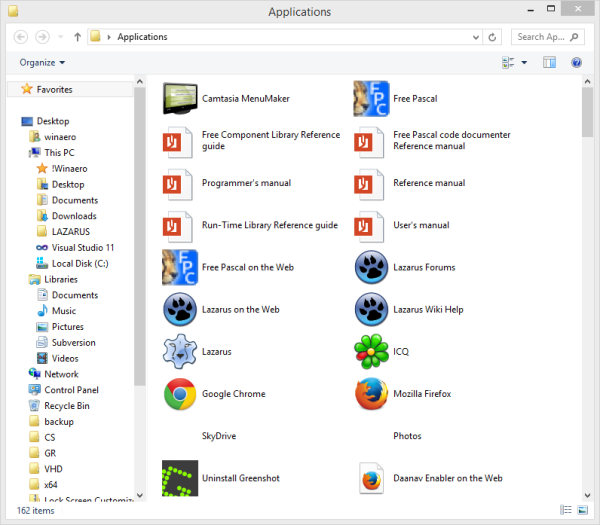
Do not touch anything in there! Seriously. Do not change the view, do not click on items! - Press the F10 key on the keyboard. The window will get a menu, choose View -> Choose details.
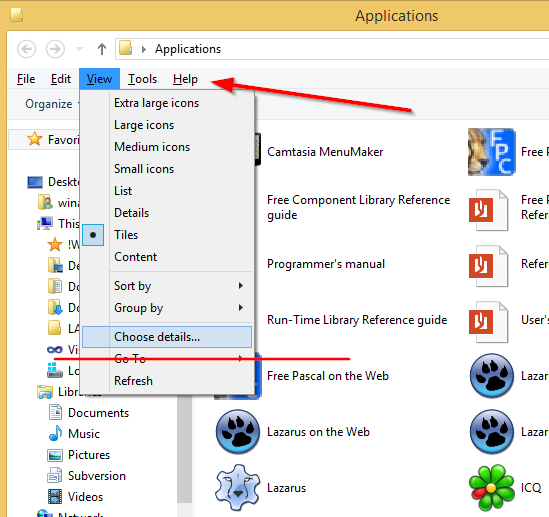
- In the next dialog, tick the AppUserModelId checkbox:
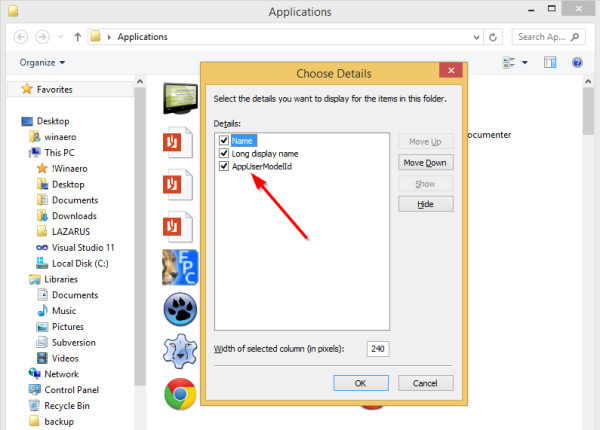
- Now switch the view to "Details":
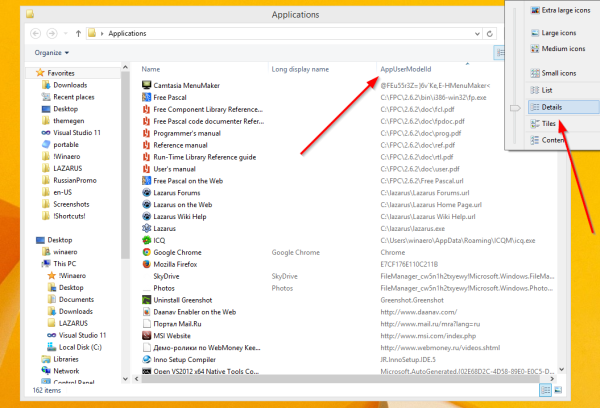
You will notice a new column, AppUserModelId - Scroll to the desired Modern app. For example, let's consider Reading List.

Note the AppUserModelId value. For the Reading List app it isMicrosoft.WindowsReadingList_8wekyb3d8bbwe!Microsoft.WindowsReadingList
- Create a new shortcut with the following target:
explorer.exe shell:AppsFolder\Microsoft.WindowsReadingList_8wekyb3d8bbwe!Microsoft.WindowsReadingList
- Specify the name and icon for the shortcut you have created:
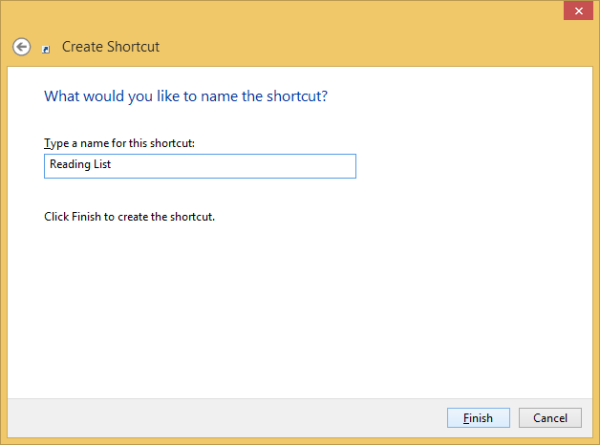
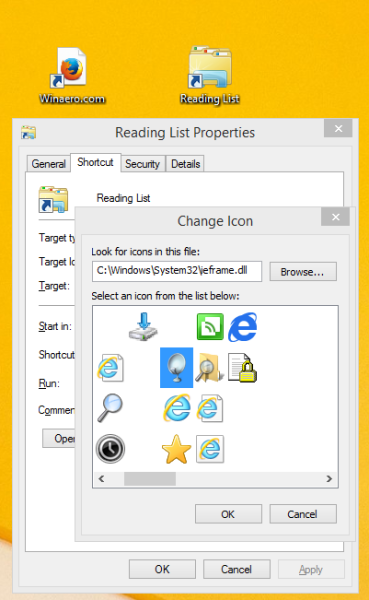
Voila! Use the shortcut you just created to launch the Reading list app! You can even pin it to Taskbar:
Repeat these steps for every app you want to launch from the Desktop. Unfortunately, the icon for the Modern app cannot be fetched from the Apps folder directly. You will have to give it another icon of your choice. Start Menu replacements generate the icon from the image tile of the app so that's how they are able to launch Modern apps and show their icons.
If you share this tip, don't forget to give credits to us by linking to this blog post.
Support us
Winaero greatly relies on your support. You can help the site keep bringing you interesting and useful content and software by using these options:
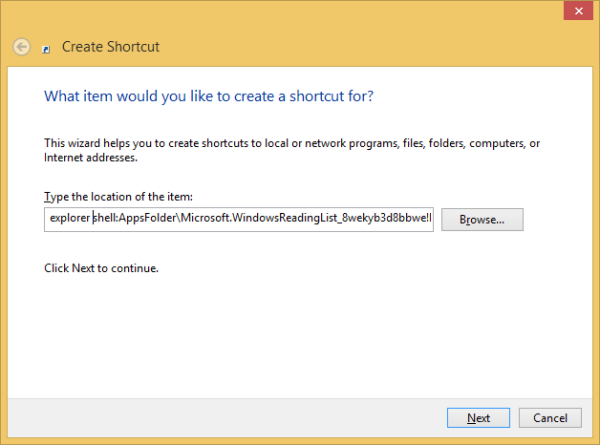
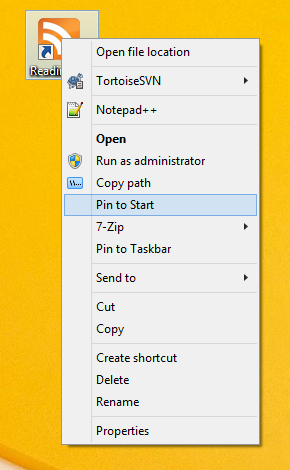
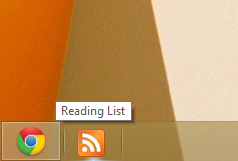

Pretty Sure ObbyTile can do the same thing…
Yes. The OblyTile method is what Winaero blogged about earlier: https://winaero.com/blog/how-to-pin-modern-metro-apps-to-the-taskbar/ and any decent Start Menu replacement also can but that wasn’t the point of this article. :) The point was to show the user how to do it without third party apps :) Even Windows RT users can use this trick.
thanks.. worked great appreciate the tip!
How can I launch metro IE from desktop? Is it possible?
First go to Default Programs Control Panel and set IE as the default browser, then download and run OblyTile (http://forum.xda-developers.com/showthread.php?t=1899865). Go to its Manager and create a shortcut to Default Immersive browser as shown in the screenshot: . Click ‘Create tile’. Then open %Localappdata%\Microsoft\Windows\Application Shortcuts\OblyTile and you pin that shortcut to the taskbar or Start menu. It will launch Metro IE only if IE is the default browser.
. Click ‘Create tile’. Then open %Localappdata%\Microsoft\Windows\Application Shortcuts\OblyTile and you pin that shortcut to the taskbar or Start menu. It will launch Metro IE only if IE is the default browser.
Thank you so much!
Hello thank you for your article ! Does your trick work for IE as well or is Oblytile the only option for this app ?
My point is that I would like IE modern UI to launch immediately after the computer starts to display its homepage in UI Mode.
Thank you for your help !
I don’t know how to thank you, I’ve been searching for hours to no avail and this solved my problem.
Great to hear this :)
Gaurav:
Great post! This worked a treat.
If one wants to use the actual icon of the Modern app, getting it is quite easy:
1. In the Modern app view, right click the icon > Resize > Small
2. Take a screenshot (Windows SnipIt tool, PrtSc, or external screenshot taker would all do the trick)
3. Save the screenshots somewhere (any format: png, jpg, bmp)
4. Obtain the small portable app: IconSushi by Towofu (Google it or use the link here: http://www.towofu.net/soft/e-index.php) and launch it.
5. Drag the saved screenshot image onto the screen, click the row just added. Then File > Save as single icon…
That’s it! You now have a .ico file whose path can be set Icon field of the shortcut’s properties.
That may be of some use to your readers.
Cheers,
Thanks a million my man!!
You are welcome.
Thanks.
You are welcome
Hi. This was really helpful for all Modern Apps except the Modern IE App which, when I followed your steps and entered its details into a shortcut link, just opened desktop IE. I have tried making Modern IE my default browser but it still wont work. If you could help me that would be much appreciated. If you need an greater explanation of my problem please email me.
Thanks.
This solution worked like a charm for me! I had also been searching for quite some time, and had managed to work out a solution for one app by guessing from some related posts, but this lays out very clearly how to create a shortcut for a “metro” or “modern” app – which I then placed in the “startup” folder, so the app is opened when I logon!
Thanks again.
Great to hear
Hi,
Thanks a bunch for this. I hate pinning stuff to the taskbar; I much prefer a quick launch with some shortcuts. It’s much neater!
I have a suggestion for the icons, though. You can find the modern apps in the ‘C:\Windows\SystemApps’ folders which contain the .exe files with their respective icons.
Cheers,
Bill
Thanks Bill. Nice find.
Creating shortcuts once you get to the app folder is even easier than this, at least for Windows 10: just click and drag an item onto the desktop. It will prompt you to create a short, complete with the appropriate icon. I haven’t tried this in Windows 8 (I am skipping 8 and going straight to 10), but it would be worth checking out.
The method you described is suitable ONLY for Windows 10.
In Windows 8, you CANNOT drag tiles from the Start screen to Desktop.
That’s why this article exists here, it was/is useful for Windows 8 and Windows 8.1 users.
Thanks very much man !
You can skip the final steps, all you need to do is right click the app you want to pin to the desktop and click create shortcut. It will say that it can’t be placed there, and would you like it to be placed on the desktop? Click yes, and it will be done.
Oh really? Not in Windows 8/8.1 my friend.
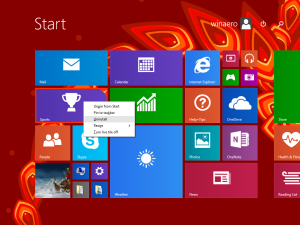
There is an easy way to create desktop shortcuts for moddern apps in Windows 8.1. Enter shell:AppsFolder in the “Run” dialog. In the “Application” folder right click an app and click “Create shortcut”. The shortcut will be created automatically in the desktop with its real(original) icon. Dragging an item onto the desktop from the “Application” folder also works in Windows 8.1.
Create shortcut verb for apps folder is only in Windows 10, not 8/8.1. Drag and drop does not work either. You can probably confusing Windows 10 with Windows 8.
Indeed.
Thanks, works perfectly for me on Windows 8.1 Home edition.
Here’s another addendum tip, once you’ve created the needed shortcut to the Modern app on your desktop using Vladislav’s tip:
You can enter “shell:SendTo” in the “Start->Run” dialog (if you are using the must-have Classic Shell utility to get the old Start button back), and then drag-drop the new shortcut into the SendTo folder. I just tried this trick with the Fotor (photo editor) modern app, and I was able to right-click photo files from Explorer and send them to Fotor directly for editor.
Perfect! :-)
not all these steps first step is suffisent
type in windows execute: shell:appfolders and return.this fires the applications folder location.
rightclick on any windows application–create a shortcut (its mandatory on desktop)—rightclick on this shortcut created …properties
and you can see the target of the shortcut used to lauch the app.
your final step in explorer brings effectively the complet target of the app but its grayed and must copy it letter by letter(not selectionnable in my windows10 version 1703 the latest).
its also the case on the shortcut created itself.
Right click an icon from that shell view + dragging it to the desktop in W10 does seem to work for me also. Much quicker that way.
This article is applicable to Windows 8.1 and Windows 8. This is clearly mentioned in the article.
The method you mentioned is available starting Windows 10 (if I not mistaken, with Autumn Update/Threshold 2). You cannot drag and drop tiles in Windows 8x.